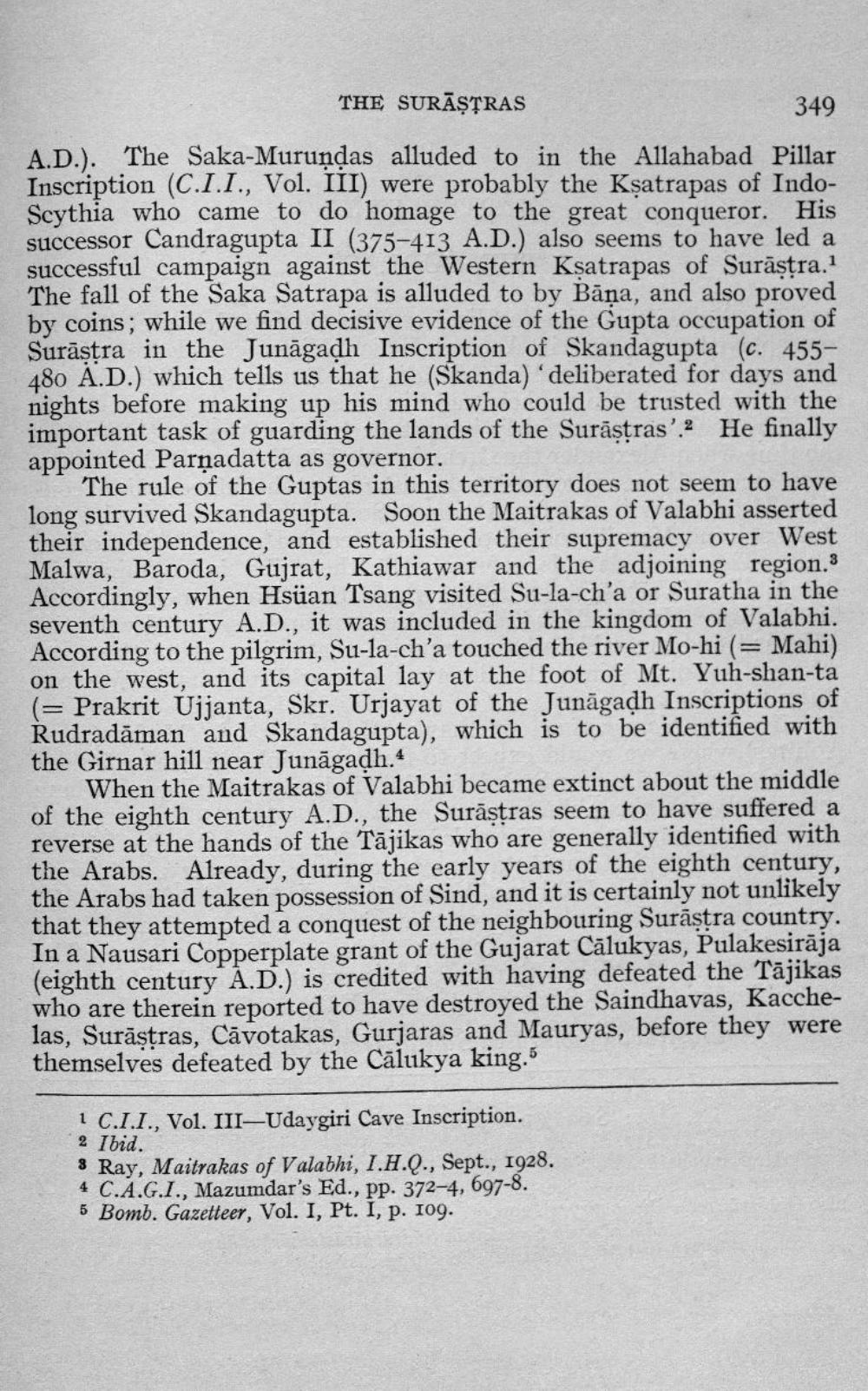________________
THE SURĀSTRAS
349 A.D.). The Saka-Murundas alluded to in the Allahabad Pillar Inscription (C.I.I., Vol. III) were probably the Ksatrapas of IndoScythia who came to do homage to the great conqueror. His successor Candragupta II (375-413 A.D.) also seems to have led a successful campaign against the Western Ksatrapas of Surāstra. The fall of the Saka Satrapa is alluded to by Bāņa, and also proved by coins; while we find decisive evidence of the Gupta occupation of Surāstra in the Junāgadh Inscription of Skandagupta (c. 455480 A.D.) which tells us that he (Skanda) deliberated for days and nights before making up his mind who could be trusted with the important task of guarding the lands of the Surāṣtras'.2 He finally appointed Parņadatta as governor.
The rule of the Guptas in this territory does not seem to have long survived Skandagupta. Soon the Maitrakas of Valabhi asserted their independence, and established their supremacy over West Malwa, Baroda, Gujrat, Kathiawar and the adjoining region.3 Accordingly, when Hsüan Tsang visited Su-la-ch'a or Suratha in the seventh century A.D., it was included in the kingdom of Valabhi. According to the pilgrim, Su-la-ch'a touched the river Mo-hi (= Mahi) on the west, and its capital lay at the foot of Mt. Yuh-shan-ta (= Prakrit Ujjanta, Skr. Urjayat of the Junāgadh Inscriptions of Rudradāman and Skandagupta), which is to be identified with the Girnar hill near Junāgadh.4
When the Maitrakas of Valabhi became extinct about the middle of the eighth century A.D., the Surāṣtras seem to have suffered a reverse at the hands of the Tājikas who are generally identified with the Arabs. Already, during the early years of the eighth century, the Arabs had taken possession of Sind, and it is certainly not unlikely that they attempted a conquest of the neighbouring Surāstra country. In a Nausari Copperplate grant of the Gujarat Cālukyas, Pulakesirāja (eighth century A.D.) is credited with having defeated the Tājikas who are therein reported to have destroyed the Saindhavas, Kacchelas, Surāṣtras, Cāvotakas, Gurjaras and Mauryas, before they were themselves defeated by the Cālukya king.
1 C.I.I., Vol. III—Udaygiri Cave Inscription. 2 Ibid. 8 Ray, Maitrakas of Valabhi, I.H.Q., Sept., 1928. 4 C.A.G.I., Mazumdar's Ed., pp. 372-4, 697-8. 5 Bomb. Gazetteer, Vol. I, Pt. I, p. 109.




